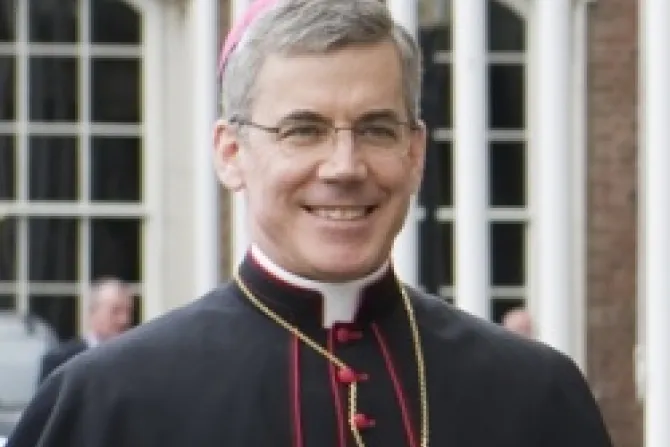Dublin, Ireland, Aug 23, 2012 / 03:12 am
Just as 19th-century Ireland experienced Christian renewal after the apparition of Our Lady of Knock, modern Ireland can likewise undergo an "authentically Catholic" renewal despite decades of troubles, says Archbishop Charles Brown, the apostolic nuncio to Ireland.
"Brothers and sisters, the future of the Church in Ireland begins now," Archbishop Brown said in his homily at the Aug. 22 closing Mass of the National Public Novena honoring Our Lady of Knock at the Knock Shrine in County Mayo.
"Certainly, the road ahead is not an easy one, but the road ahead for Catholics in Ireland did not look very easy in 1879 when Our Lady appeared here on that rainy evening in August. And yet her appearance was followed by one of the most fruitful periods in the 15 centuries of Catholicism on this Island."
On Aug. 21, 1879, the Virgin Mary, St. Joseph and St. John the Evangelist appeared to 15 witnesses at the Catholic church at Knock. The apparitions were near an altar with a cross and a lamb, around which angels hovered. The apparitions remained silent as the witnesses watched and prayed for two hours in the rain.
Archbishop Brown reflected on the situation of Ireland in 1879, noting that the country was not yet free and independent. Thirty years before, almost a million people had suffered and died during the Great Famine, while many more had been forced to emigrate.
"And so it was that, in those very bad times, Mary appeared, to comfort and to console and – although she never spoke a word – to lead her people, to direct her children to the Lamb on the altar, the Lamb who was slain but who now is alive, the 'Lamb of God who takes away the sins of the world.'"
The century that followed the apparition witnessed an "extraordinary flourishing" of the Catholic Church, with "huge numbers" of priestly and religious vocations.
"Such a flourishing would have seemed impossible in 1879. But the night is often darkest before the dawn," Archbishop Brown said.
He noted negative trends in contemporary Ireland, including "two decades of scandals, crimes and failures."
"Certainly, there are reasons for discouragement," he acknowledged.
However, he also pointed to signs of hope.
Tens of thousands of people attended the International Eucharistic Congress in Dublin in June. At a recent ordination of a young man to the priesthood, Archbishop Brown witnessed a small country church "filled with people young and old" with a beautiful liturgy and hymns in the Irish language.
On Reek Sunday, the July commemoration of St. Patrick's fast, the archbishop saw "thousands of pilgrims" climbing Croagh Patrick and hundreds going to confession. In Clonmacnoise, he saw "literally hundreds of young people" in Eucharistic adoration, praying the Rosary, confessing their sins and "rejoicing in the liberating love of God."
"That, my brothers and sisters, is the future of the Church in Ireland," said the archbishop.
He urged authenticity in the Catholic faith with firm attention to "the reality of salvation," citing Pope Benedict XVI's insistence that Christians must deepen their understanding of their faith.
"We need to propose the Catholic faith in its fullness, in its beauty and in its radicality, with compassion and with conviction. We need to be unafraid to affirm the elements of the Catholic way which secular society rejects and ridicules," he said.
(Story continues below)


